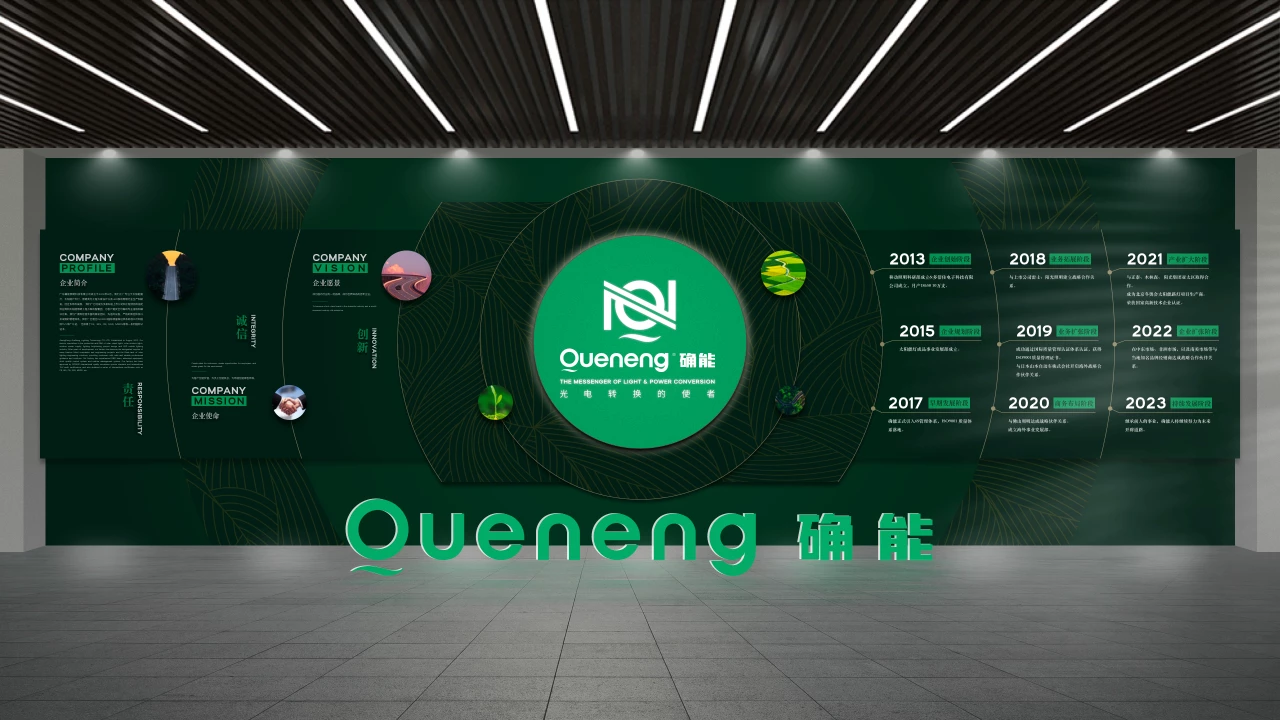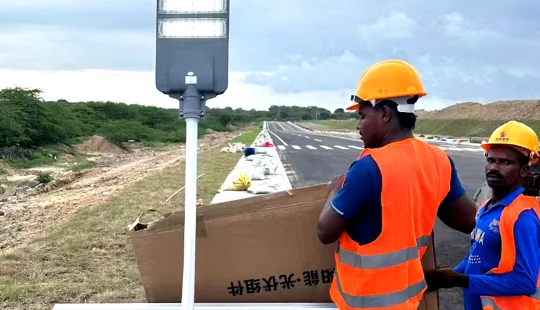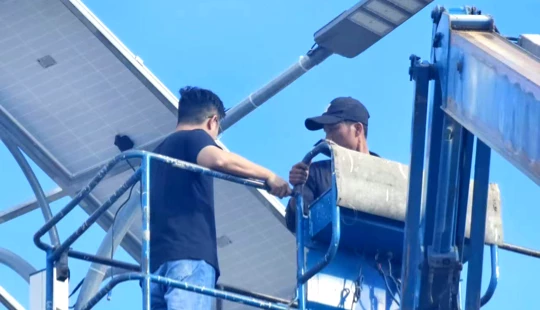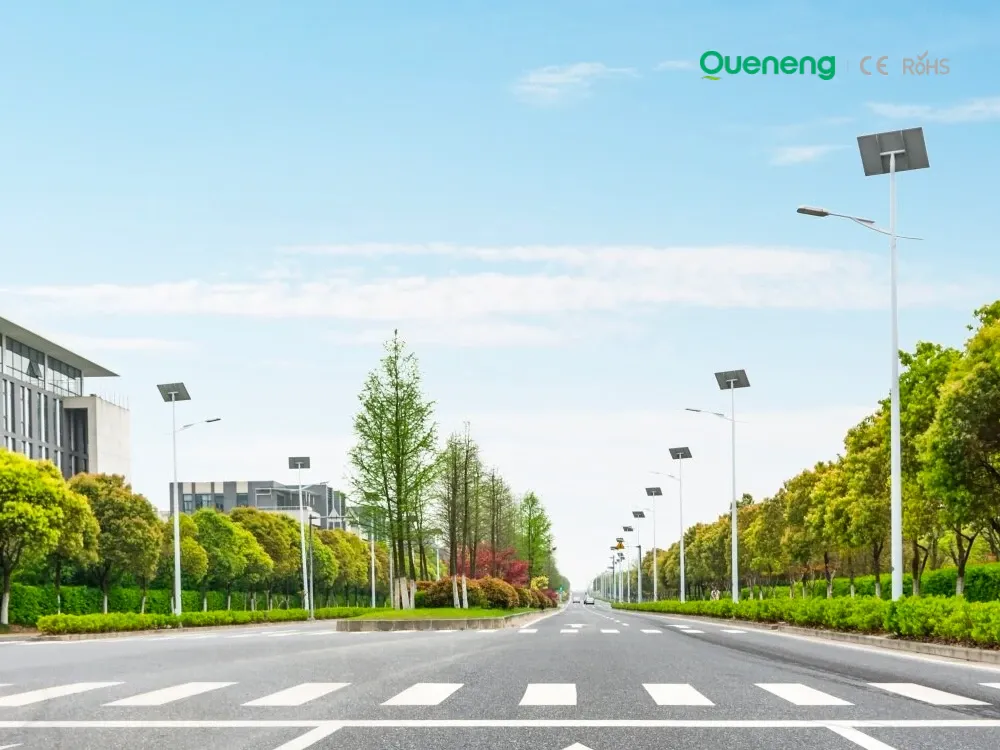By GuangDong Queneng Lighting Technology Co., Ltd.
Launching a pilot solar street lighting project is an excellent way to validate the feasibility, performance, and impact of solar lighting before committing to a full-scale deployment.
But once your pilot is successful, how do you scale up efficiently to cover an entire community, district, or city?
At Queneng Lighting, we’ve helped many clients worldwide move from small pilots to large-scale solar lighting networks. In this guide, we’ll outline a step-by-step approach to expanding your pilot project — while ensuring technical, financial, and operational success.
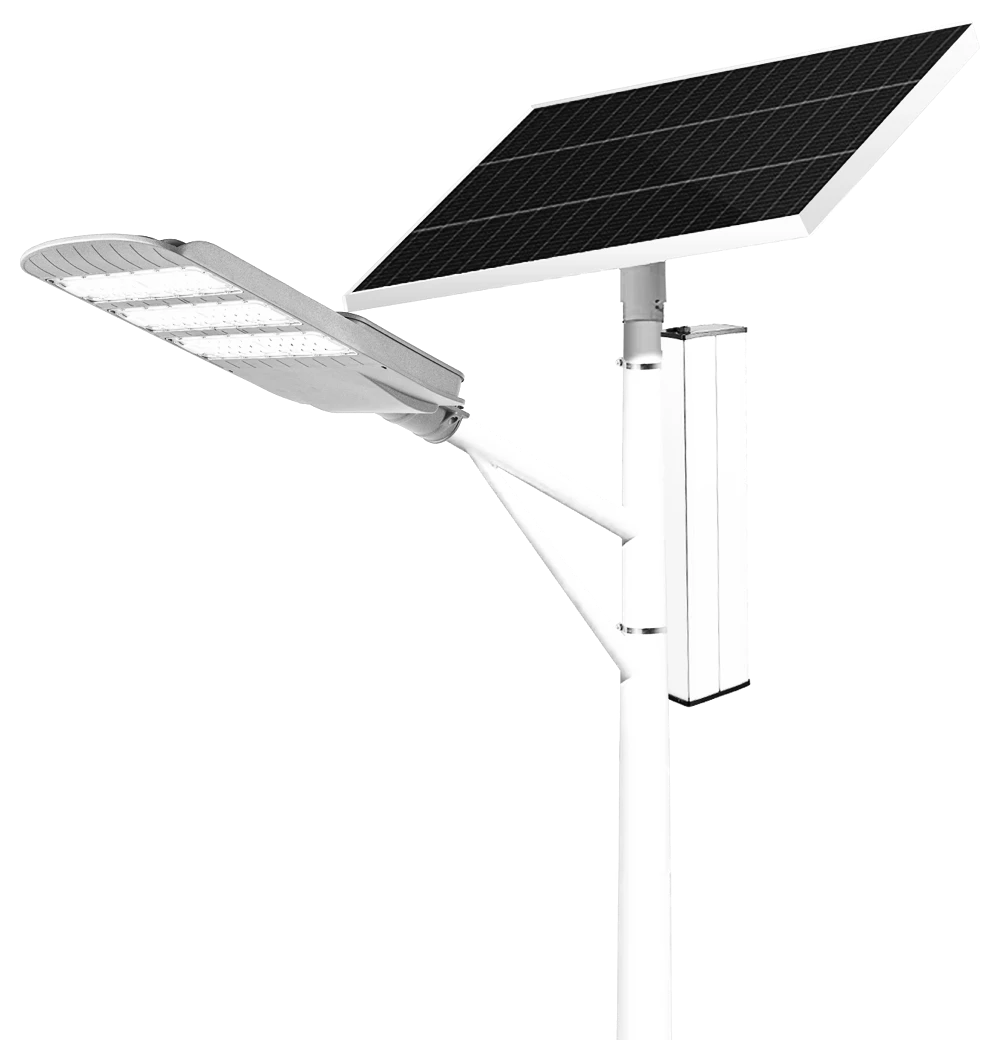
1️⃣ Evaluate Pilot Project Results
Before scaling up, it’s critical to thoroughly assess your pilot project performance:
- Did the solar street lights perform as expected (illumination, reliability, uptime)?
- Were there any unexpected technical issues?
- How did different locations affect performance (shading, microclimates)?
- What was the community feedback on light levels, coverage, and aesthetics?
- How was maintenance handled — any challenges?
- Was energy yield sufficient year-round?
Document lessons learned to inform your full-scale deployment.
2️⃣ Conduct a Detailed Site Assessment
A small pilot may only cover uniform locations, but scaling up will expose more variability:
- Terrain and shading differences
- Pole spacing and road width variations
- Grid connectivity (for hybrid solutions)
- Seasonal insolation patterns
Perform a new site survey across the full project area:
- Measure solar potential and shading
- Assess installation feasibility
- Identify areas requiring custom solutions (e.g., higher poles, additional batteries)
- Map obstacles such as trees or buildings
Use tools like GIS mapping and drone surveys to plan accurately.
3️⃣ Standardize Technical Specifications
Scaling requires consistent technical specifications to:
- Simplify procurement
- Ensure compatibility across locations
- Reduce maintenance complexity
Work with your supplier (such as Queneng Lighting) to define:
- Solar panel size and efficiency
- Battery type and capacity
- Light source (LED wattage, optics, color temperature)
- Control system (smart IoT vs. standalone)
- Mounting hardware and pole specifications
Queneng offers customizable, modular solar street lighting solutions that can be easily scaled and adapted.
4️⃣ Secure Scalable Funding
Scaling from 10 pilot lights to 500 or 5000 lights requires robust financial planning:
- Develop a detailed capex & opex model
- Explore financing options:
- Government budget allocation
- Green infrastructure grants
- Public-private partnerships
- Energy savings performance contracts
- Plan for bulk procurement to optimize cost per unit
Queneng can support your business case development with lifecycle cost models and case studies.
5️⃣ Plan for Logistics & Installation at Scale
Installing hundreds or thousands of solar street lights introduces logistics challenges:
- Bulk shipment and warehousing
- Pre-installation testing
- Deployment sequencing (area by area)
- Coordination with civil works (pole foundations, wiring if needed)
Choose suppliers like Queneng who offer:
- Pre-integrated, plug & play designs
- Fast installation hardware
- Robust packaging for large-volume shipping
6️⃣ Implement Smart Monitoring and Maintenance
Scaling up also means scaling operations & maintenance (O&M):
- Deploy smart IoT controllers for remote monitoring
- Use cloud dashboards to track performance and detect faults
- Train local maintenance teams
- Set up spare parts inventory for quick replacements
- Establish O&M KPIs (uptime %, MTTR, energy yield)
Queneng’s solar street lighting systems support LoRaWAN, Zigbee, and GSM/4G-based remote monitoring for easy large-scale management.
7️⃣ Monitor Performance and Optimize
Even after full deployment, continuous optimization is key:
- Analyze performance data to adjust lighting schedules
- Monitor energy usage and battery health
- Conduct periodic audits to ensure quality
- Gather community feedback and refine light placement
Our AI-powered lighting controllers help automate optimization based on traffic, weather, and environmental data.
Conclusion
Scaling a pilot solar street lighting project is a rewarding but complex process. Success depends on:
- Careful evaluation of pilot results
- Comprehensive planning and site assessment
- Standardized technical specifications
- Scalable funding models
- Efficient logistics and installation
- Smart monitoring and maintenance
At GuangDong Queneng Lighting Technology Co., Ltd., we offer complete support for every phase of your project — from pilot to large-scale deployment.
Our advanced solar street lighting solutions are trusted by cities, municipalities, developers, and enterprises worldwide.
Contact us today to discuss your project and explore how we can help you scale up your solar lighting network with confidence.
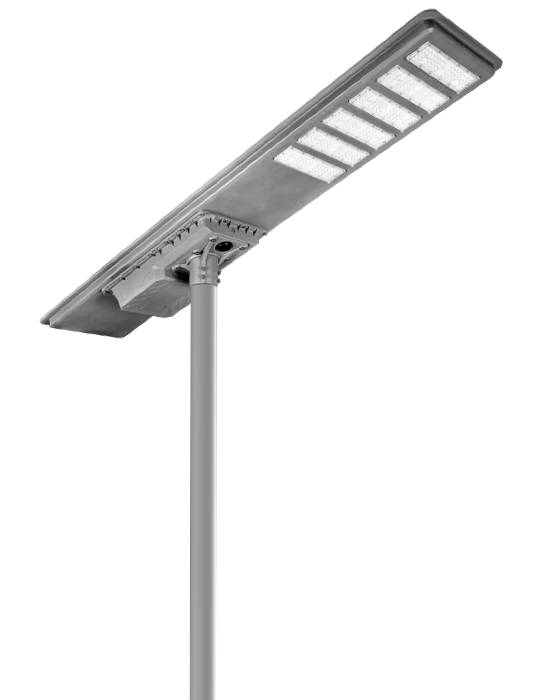
FAQ
Q1: How long should a pilot solar street light project run before scaling up?
A typical pilot runs 3–6 months to capture seasonal performance data. However, with advanced modeling and quality equipment, shorter pilots may be feasible.
Q2: What is the biggest challenge when scaling up?
The biggest challenges include logistics management, maintaining quality consistency, and ensuring maintenance readiness at scale.
Q3: How can I ensure lighting uniformity across a large project area?
Work with experienced lighting engineers to conduct photometric analysis and site surveys. Use standardized designs and consistent components.
Q4: Can smart IoT controls help manage large solar street lighting networks?
Absolutely. IoT-enabled lights allow centralized monitoring, performance optimization, and efficient maintenance for large deployments.
Q5: Does Queneng provide scalable solar lighting solutions?
Yes! Queneng specializes in modular, scalable solar street lighting systems with IoT, AI, and advanced battery technology — perfect for projects of all sizes.





